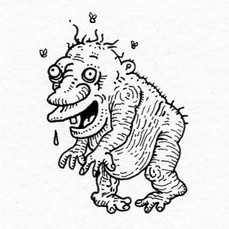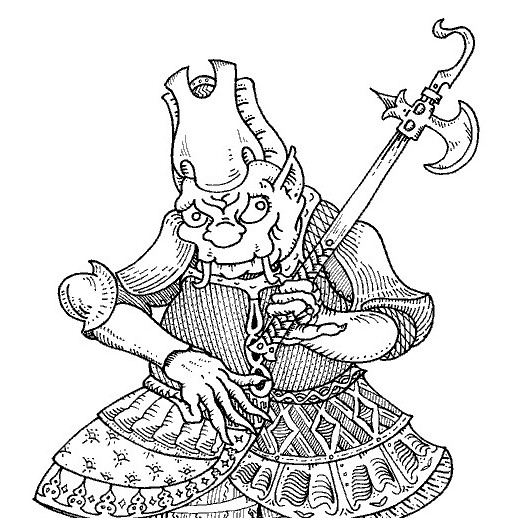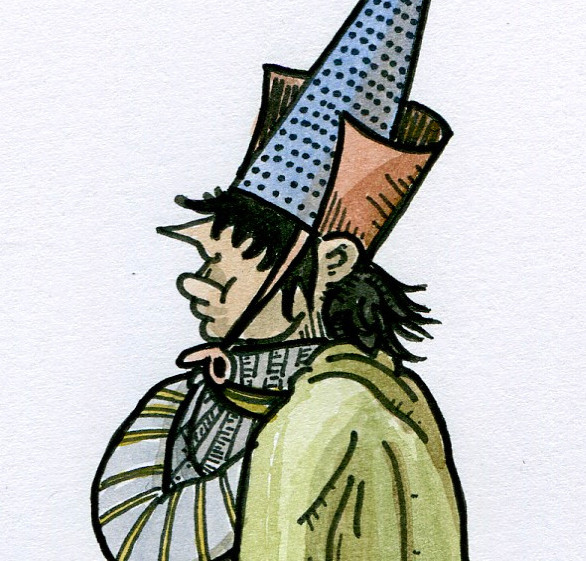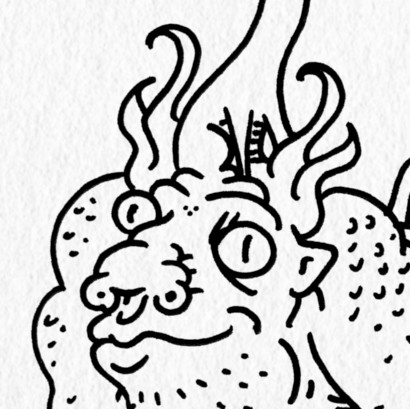
Land of Eternal Rule: The plains here are dotted with rocky outcrops
on which local strongmen of the past built their forts.
Lasting grip
At a glance
The borders of Lanqedoor are defined by the river Banggerd to the north, the river Dool* along the south-west, and the mountains of Lagsaksse to the south-east.
Old souls
IT IS SAID that in Lanqedoor ‘one rules eternal‘. It is a curious statement, explained by the beliefs of the local clans: when the first settlers arrived here, they built their homes around the small conical hills that dot the land.
STRONG LEADERS would build their hall on the highest point. Upon death, they were laid to rest under stone mounds erected atop their ‘personal’ hill.
Through this practice, the presence of the old clan-leaders never faded, their memories endured, and long after their passing the clansmen would continue to live by their rules.
The presence of the deceased was such that no other leader was ever allowed to take a clan-mother or -father’s place.
From this a rigid form of ancestor worship developed, whereby the ‘will’ of the clan-progenitors is interpreted and translated by sensitives, or seers.
ONE COULD ARGUE that this is a clever ruse by the seers to cling to power, but there would be little to gain here: just as the leadership is -quite literally- set in stone, so are many customs, landrights and laws. As such even the seers have little power to get things their way.
Another perk is how the breeds of Lanqedoor can reliably predict the outcome of many conflicts, and this in turn results in a stable and unyielding society.
Even so, while their heritage mirrors their future, it is the outside world that may one day decide it will change everything.
Dead soil
LANQEDOOR is a true paradise for vermin who thrive on the many types of wild rye, malt and berries that grow here so abundantly. In larger settlements the practice of snakehandling was introduced to repel the worst rat infestations.
But there is a bigger enemy encroaching the locals: centuries of inneficient slash-and-burn farming, tomb-digging, and rearranging boulders has started caused severe soil erosion. This is turning much of the land into dry, barren badlands. The shrubs that still grow there are not much to look at, let alone eat.
For the curious
THE LANNEQFOOR* is an economic union made up of several towns. Its major members are Trývant, Stalvve, Doorrek, and Stoofputtestoppe. This cooperation tries to chain their trade caravans together, to better conduct trade between Lanqedoor and the agrarian paradise Brauec.

STALVESTTE is an ancient citadel built to protect the settlements of Stalvve*. This place has become a trade hub for wild herbs, spices and flowers from the surrounding countryside.
Notes
Dool — This river, while just a modest waterway in Lanqedoor, is a major trade- and transportation route between the Sakkse highlands and the coast. Stigjaan Akkleus documented one of his trips along this stream.
Lanneqfoor — could be translated as Road Market. The word looks to be in a Vryvrankkes dialect. This is curious, as Vryvrankke lies quite a long way from Lanqedoor and has always hesitated to partake in interregional trade.
Stalvve — a collection of small towns and villages nudged between the rivers Dool and Zeyp. They are loosely organized into a confederation of sorts. The Stalvestte is manned by veterans and volunteers from these towns.







